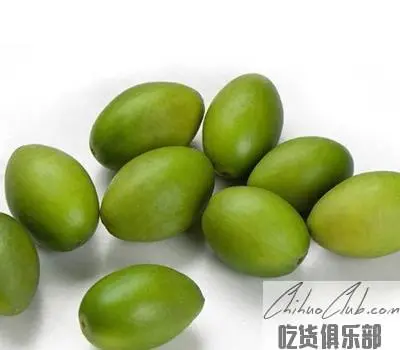
Jinyu Sannian olive
-
Update date::
-
Date of protection::
-
Protected range:The scope of protection of Jinyu Sancha olive geographical indication products is based on the scope proposed by the People’s Government of Chaoyang District, Shantou City, Guangdong Province, on the scope of the production of Jinyu Sanqi olives (汕潮阳府函 [2007] No. 12). The administrative area of Jinzao Town, Chaoyang District, Shantou City.
-
Related origin:
-
Category:
Jinyu Sancha olives, mainly produced in Jinzao Town, Shantou, Guangdong Province (originally produced in Jinyu Town, one of the predecessors of the town), and its peel yellow wax is bright, obovate, and the fruit base is flat, blunt, slightly tri-shaped, so name.
Jinyu Sancha olive quality technical requirements (a) variety. Three olives. (2) Site conditions. The soil type is red soil, the soil texture is sandy loam soil, the pH value is 4.1 to 6.5, the loam thickness is 0.8m or more, and the organic matter content is ≥1.5%. (3) Cultivation management. 1. Nursery: Take the local olive seedlings as the rootstock, collect the scion from the high yield, stable yield, high quality, no quarantine objects, and grow strong and strong mother trees for grafting and breeding. 2. Planting: (1) Colonization time: in the middle of March to April or mid-October. (2) Planting density: ≤210 plants per hectare. 3. Plastic trimming: Winter trimming combined with summer trimming ensures that the canopy is ventilated and light. 4. Fertilization: mainly based on decomposed organic fertilizer, supplemented by chemical fertilizer. Young trees should be ≥15kg per plant per year, and mature organic fertilizer should be ≥30kg per plant per year. 5. Environmental and safety requirements: The use of pesticides, fertilizers, etc. must comply with relevant national regulations and must not pollute the environment. (4) Harvesting. 1. Picking time: before and after the winter solstice in December, it cannot be picked in rainy days. 2. Harvesting method: manual picking. (5) Quality characteristics. 1. Sensory characteristics: the peel is golden yellow, the waxy layer is thin, the skin color is smooth and bright, the flesh is yellowish white; the fruit base is flat and blunt, and the fruit body has three facets in the longitudinal direction; the flesh is crispy and slag, and the mellow alcohol It is light and elegant, with a good taste, good taste and long lasting aftertaste. 2. Physical and chemical indicators: single fruit weight 8g to 12g, edible rate ≥ 80%, protein content of pulp ≥ 1.2%, iron content ≥ 1.0mg / 100g, reducing sugar content ≤ 2.2%. 3. Grading: Fruits can be divided into special grades and grades according to their color, shape and weight of single fruit. Grade color appearance Single fruit weight special grade gold yellow, smooth, no traces are obovate, the base is wider, flat and blunt, the body is slightly triangular, and the uniformity is good. 10-12 g of first-grade skin is yellowish-yellow, smooth, with few spots and small and long oval shape. The base is slightly wider and flatter. The body is slightly triangular and the uniformity is good. 8-10 g 4. Safety requirements: Product safety indicators must meet the relevant regulations of the state for similar products.
Apply to:
Producers within the scope of the protection of the gold and gems of the Golden Jade Olives may apply to the Quality and Technical Supervision Bureau of Chaoyang District, Shantou City, Guangdong Province for the use of the “Special Mark for Geographical Indication Products”, which is approved by the General Administration of Quality Supervision, Inspection and Quarantine.